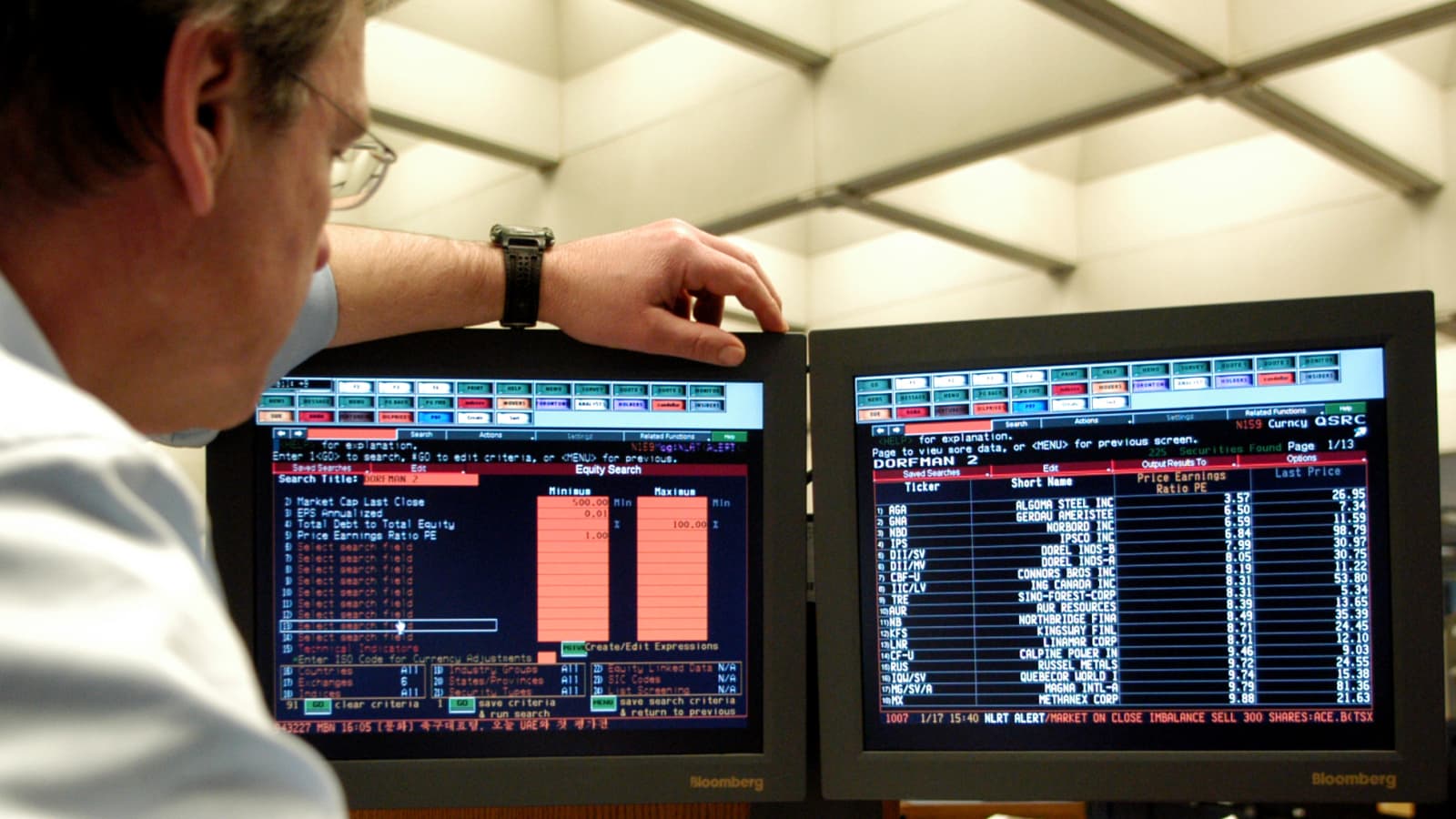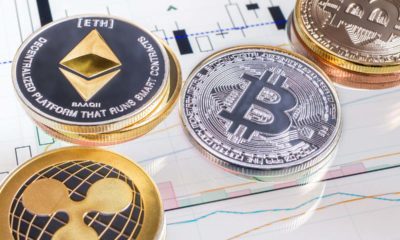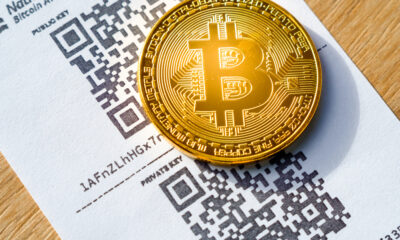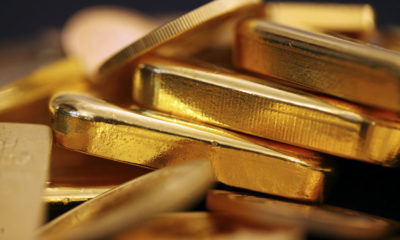Markets
Friendly Friday
Published
3 years agoon

By Jeffrey Halley, Senior Market Analyst, Asia Pacific, OANDA
Asian markets have begun the day in an altogether positive mode after Wall Street outperformed overnight. Driving the equity rally were good results from department store retailers, notably high-end ones.
The only blotch was Gap, which fell down a Gap with its stock price punished accordingly. That allowed the perpetually circling and no desperate buy-the-dip mafia to load up on risk positioning again with the US Dollar also falling. It also allowed markets to ignore a downward revision of US Q1 GDP QoQ to -1.50%, Kansas Fed Manufacturing Index for May falling to 19, and Pending New Home Sales for April slumping deeper into negative territory at -9.1%. The latter is particularly ironic as recent soft housing data had been responsible for some previously ugly sessions on Wall Street recently. Still, why let the facts get in the way of the desperation to buy the dip.
Notable once again, are that US 10-year yields are once again retesting the four-decade downtrend line, which by my estimates comes in around 2.75%. Fears of gasoline and diesel shortages during the US driving season also pushed oil prices over 3.0% higher overnight. Some unofficial gossip ahead of next week’s monthly OPEC+ JTC meeting suggests that the grouping will stick to its scheduled 432,000 bpd incremental increase. Brent crude could test the top of my $120.00 a barrel medium-term range next week. I can’t see US yields and oil moving higher being constructive for equities next week.
In data out of Asia today, Tokyo’s Core CPI in May remained at 1.90%, although with the Bank of Japan saying inflation is driven by external factors, and not the Japanese consumer, we shouldn’t expect any change in their ultra-low forever stance. Australian Preliminary Retail Sales eased, as expected, to 0.90% with no serious cost-of-living cracks appearing as yet in the Lucky Country. China’s Industrial Profits (YTD) YoY for April fell to 3.50% from 8.50% in March. The Shanghai shutdowns and covid-zero policies account for the slowdown, but market impact was minimal as the number was right on market expectations. China will have bigger fish to fry going forward as it tries to keep growth and the property market on track, while enacting sweeping lockdowns across parts of the country thanks to its covid-zero policy.
The rest of Asia’s calendar is light with Singapore PPI likely to be ignored after yesterday’s firmer Industrial Production data eased slowdown fears. Europe’s calendar is similarly second tier. US Personal Income and Personal Spending for April, along with the PCE Price Index and Michigan Consumer Sentiment round out the week. Personal Income and Expenditure and the PCE Index could settle nerves on inflation and Fed tightening if they print on the low side, ditto for Michigan Consumer Sentiment. That would set Wall Street up for another positive season to round out the week and weigh on the US Dollar.
Apart from oil, most of this week has been one of frantic range trading, as the herd runs this way and that on swings in risk sentiment. Lots of noise, little substance, although reading the financial press swinging from doom to bloom day-to-day has been mentally tiring.
Next week sees the arrival of June and its “business time.” Asia sees the release of China and India PMIs and Australian GDP and Trade Balances. Europe has German, French and Eurozone Inflation, as well as the ongoing saga of an EU oil ban on Russia. Russia has kindly offered to allow exports of wheat from Ukraine and Russia, in return for sanctions relief.
I believe June will be a watershed month for Europe, the UK, and America as to the depth of their commitment to a war economy and Russia. Perversely, if they blink for short-term national gains, it would be quite a tailwind for global equities and bonds. The financial markets are a harsh mistress.
June also brings us a bevvy of US data and a Bank of Canada policy decision next week. US data releases include the house price index, JOLTS Job Openings and ADP Employment, and ISM Manufacturing before the one ring to rule them all, Friday’s Non-Farm Payrolls. Oddly enough, the most important event of them all is being largely ignored by markets to their peril.
In the Dark Tower of the Fed, they have $8.5 trillion of debt instruments they need to get rid of. Quantitative tightening starts next week, scaling up to $95 bio a month by September. I’d hate to see the mark-to-market P&L on that position, but I guess when you can print money, it doesn’t matter. It may well matter to markets though with the Fed also set to tighten by 0.50% per month over the coming months (including June). I am yet to be convinced that the Fed can pull this off without causing another taper tantrum or sending the US 10-years well North of 3.0%, or both. They, like everyone else, will be hoping inflation indicators flatten in the months ahead, to keep the bids out there in the bond market. All I’ll say is don’t mistake short-term noise in the equity market as a structural turn in direction higher.
Asian equities shrug off weaker China Industrial Profits.
Wall Street staged a powerful rally overnight thanks to mostly impressive results from US retailers. The S&P 500 rallied by 1.99%, the Nasdaq leapt 2.68%, and the Dow Jones climbed by 1.62%. Although the rallies were impressive, the price action was very much in line with the schizophrenic behaviour of Wall Street these past few weeks, and I have no doubt that one piece of bad news will send the FOMO gnomes scurrying for the exit. In Asia, US futures have eased by around 0.15% as profit-taking from the overnight session makes its way through the market.
The impressive overnight rally has allowed Asian markets to ignore weakening China Industrial Profits this morning, and with a slow news day this far, Asia looks set to end the week on a positive note. Japan’s Nikkei 225 is 0.50% higher, with South Korea’s Kospi rallying by 0.90%. Taipei, meanwhile, has jumped by 1.65%, coat-tailing the Nasdaq.
Mainland China equities are also higher, the Shanghai Composite rising by 0.50%, with the CSI 300 gaining 0.62%. Meanwhile, the market always looking for a reason to buy, Hong Kong, has leapt 2.93% higher. Singapore has risen by 0.45% today, with Kuala Lumpur underperforming, losing 0.10%. Jakarta has posted a 1.50% gain, Bangkok is up by 0.80%, and Manila is 0.70% higher. Australian markets are also enjoying a friendly Friday, the ASX 200 and All Ordinaries climbing by 1.0%.
Except for UK markets, which posted only modest gains after the energy company windfall tax announcements, Europe performed well yesterday. Asia’s strong session should give Europe another positive start today, although, weekend risk will likely cap any rallies. US markets are a coin-toss these days and if PCE data is on the high side tonight, so will Fed tightening sentiment be. That could easily reverse yesterday’s outperformance.
Improved risk sentiment sends US Dollar lower.
The choppy range trading of the past few session continued overnight as the US Dollar swung on day-to-day moves in risk sentiment. A powerful session by Wall Street, along with almost unchanged closes in US bond markets saw improved risk sentiment send the greenback lower overnight. The dollar index fell 0.31% to 101.76 overnight. Strangely for Asia of late, the directional move has continued today, pushing the index down 0.24% to test support at 101.50. Failure of 101.50 opens a potential test of major support at 101.00. Resistance is distant at 102.50.
Not unexpectedly, EUR/USD was a major beneficiary as risk sentiment swung higher. The single currency rose 0.47% to 1.0730 and this morning has pushed through resistance at 1.0750, rising 0.25% to 1.0755. That brings the multi-decade trendline resistance, today at 1.0830, back into view. I would require a weekly close above 1.0830 to waver in my negative outlook and I remain convinced we are just one negative Russia energy headline away from the whole rally evaporating. Support remains at 1.0650.
GBP/USD added just 0.20% to 1.2610 overnight, gains tempered by the Government’s energy company windfall tax and energy subsidy announcements. Today, Sterling has outperformed, rising 0.35% to 1.2655, taking out resistance at 1.2640. It has resistance at 1.2700 now, with support at 1.2600 and 1.2470.
USD/JPY eased slightly overnight, losing another 0.20% to 126.85 on US Dollar weakness this morning. The cross remains at the mercy of move in US bond yields, and with those being benign this week, USD/JPY has continued to grind out long positioning. The chart suggests USD/JPY has further downside potential that could target 125.00. Only a move through trendline resistance at 127.80 changes the picture.
AUD/USD and NZD/USD moved sideways overnight but have posted decent gains in Asia as risk sentiment finishes Asia’s week on a high note. AUD/USD has 0.62% to 0.7140 and is eyeing resistance at 0.7150. It could potentially extend gins above 0.7200, while support is at 0.7050. NZD/USD had risen by 0.65% to 0.6520 today, taking out 0.6500 and leaving its next target as 0.6570. Support is at 0.6450.
Asian FX is moving higher today but is not reflecting the US Dollar weakness seen versus the G-10. USD/CNY, USD/CNH, USD/SGD, USD/INR, and USD/THB have fallen around 0.15% today, with the region’s ugly ducklings of late, KRW, IDR and MYR all rising by around 0.40%. That suggests that the positioning we are seeing today is being driven by fast-money flows. Unfortunately, fast-money leaves as fast as it arrives and thus, I am taking today’s gains with a grain of salt.
Oil rallies sharply.
Oil prices rallied sharply overnight as markets continued to fret over tight US galena and diesel supplies ahead of the summer driving season. News that President Biden is investigating restarting mothballed US refineries had zero impact on markets. That is not surprising as refineries, like aircraft parked in the desert, don’t have a simple on/off switch. News is also emerging that suggests OPEC+ will only raise production next week by the previously agreed 432,000 bpd, providing another supportive factor in a tight market. The street may also be pricing in peak virus in China with Shanghai’s port back to 95% of normal operations.
Brent crude jumped 2.55% to $117.30 a barrel overnight, adding just 0.20% to $117.50 in quiet Asian trading. WTI leapt by 3.11% to $114.10 a barrel, where it remains in Asia today. The firm price action this week leaves both contracts poised to potentially test the upper end of my medium-term ranges, at $120.00 and $115.00 respectively, today, or early next week. That will be a severe test of resolve around Russian sanctions as rather surprisingly, it has resulted in no material movement on easing restrictions on Iran and Venezuela, which would go a long way to changing the global supply picture. WTI’s relative outperformance is due to US gasoline and diesel supplies. The US though doesn’t have an oil problem, it has a pipeline and refining bottleneck problem.
Brent crude should find some resistance at $118.00 initially. After that, the chart shows nothing until $124.00 a barrel. Support is at $114.00 and $112.00 a barrel. The 2022 support line lies at $104.00, and only a weekly close below that signals the end of the bull market. WTI still has resistance at $115.50 and $116.60, but after that, that chart is empty until the $128.00 region, the top of the Ukraine/Russia spike. Support is at $110.35 and then $108.00 a barrel. Its long-term, 2022 support line lies at $101.50.
Gold trades sideways.
Gold seems determined to bore traders to death after another inconclusive overnight range-trading session. It finished 0.13% lower at $1851.00 an ounce. In Asia, some pre-weekend risk hedging has lifted it slightly higher to $1854.00 an ounce. Most concerning about the overnight price action by gold, was that despite a broadly weaker US Dollar seen elsewhere, and the rally in risk asset positioning overnight, gold actually finished the session lower. Its inability to rally on US Dollar weakness is an ominous sign and risks are increasing for a serious downside washout of long positions.
Gold has nearby support at $1840.00, followed by $1836.00 an ounce. Failure sees the possibility of a mini-capitulation by longs that could reach as far as $1780.00 an ounce. Gold has resistance at $1860.00, $1870.00, and $1886.00 an ounce, its 100-day moving average.
You may like
-
Gold Breaks $3,000 Barrier, Goldman Sachs’ $3,100 Projection in Sight
-
Crude Oil Prices Dip Amid Economic Fears and Supply-Demand Imbalance
-
Bitcoin Falls 5.7% After Trump Unveils Strategic Reserve Without New Purchases
-
Bitcoin’s Fear & Greed Index Hits Extreme Fear: A Golden Opportunity for Investors?
-
Bitcoin Slides 10% as Nasdaq’s Bearish Reversal Clouds Long-Term Outlook
-
Gold Rises on Haven Demand Amid US Tariff Escalation
















